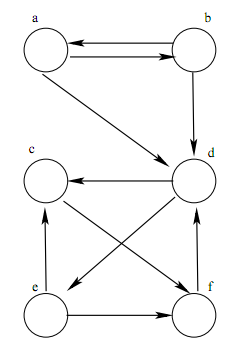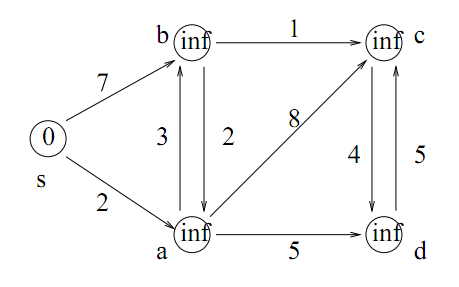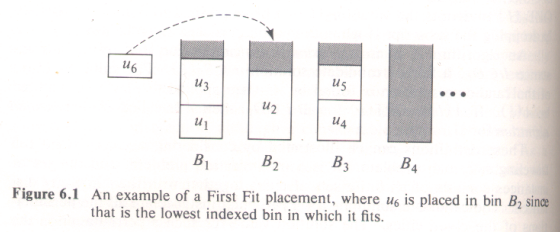- T(n) = 32 T(n / 2) + n2
- T(n) = 2 T(n / 4) + √n log(n)
- T(n) = 2 T(n / 2) + n2
- T(n) = 16 T(n / 4) + n2
- How many scalar multiplications would be required to multiply 5-by-5 matrices using ordinary matrix multiplication? (Justify your answer.)
- Suppose one could multiply 5-by-5 matrices using 91 scalar multiplications. Give the recurrence for a divide-and-conquer algorithm that would use this fact to multiply matrices of size n-by-n where n is a power of 5.
- Use the Master Method (or some other approach) so get the asymptotic performance in this case. (You may leave the answer in terms of logarithms.)
|
|

|

|
| ||||||||||||||||||||||||||||||||||||||||||||||||||||||||

- First carry out this algorithm by hand on the dag above. [Hint: make a list of the vertices, from m to z. Beside or below each vertex, write its in-degree. Now each time you remove a vertex (call it k) with in-degree 0, "remove" its edges heading out by lowering the in-degree of each target vertex at the end of an edge from k. The topological sort is the list of vertices in the order removed.]
- What will happen if the graph has a cycle, and therefore has no topological sort? (How will the algorithm behave if there is a cycle?)
- Describe an efficient way to calculate the in-degrees of all vertices at the start of an algorithm. (This can be done in O(V + E) time.) Argue that the whole algorithm will be O(V + E). (This means that there is a fixed constant c so that the time will be less than c * (V + E) for all graphs.
-
Pm = multiplication of two numbers (a* b)
Pd = division of two numbers (a/b)
Pr = reciprocal of a number (1/a)
Ps = square of a number (a2)
- Of the two relations,
Pm ≤ Ps and
Ps ≤ Pm,
one of them is trivial, and one depends on the formula:

- Use the formula below and the previous one to argue
that: Pm ≤ Pr.

|
| ||||||||||||||||||||||||||||||||||||||||||
- Explain carefully what this mystery program does. What is its output and what actions does it go through to produce this output? (All tape squares outside those shown are zero.)
- Explain what the program would do if the starting tape
configuration were the following:
Initial ...00011100111000... tape: |
-
L1: find the square root of x, where 1/4 <= x <= 1.
L2: find the square root of x, where 0 < x.
- One of these reductions is trivial. Which one is "trivial" and why do I use that word.?
- The other is something that we proved. What rough technique did we use to prove it?
- Did the undirected graph of the 48 states have a Hamiltonian Cycle? Did it have a Hamiltonian Path?
- If you had a Hamiltonian Cycle in a Graph, explain how you could get a Hamiltonian Path.
- Does a complete graph always have a Hamiltonian Cycle?
- Let TS stand for the Traveling Salesman Problem. We proved something involving HC and TS. What was it?
- Suppose we could solve the BP decision problem in time O(P(n)) for some polynomial p in the variable n. Explain how we could then find the minimum number of bins required in time O(P(n)*log(m)), where m is a number of bins that easily accommodates all the objects.
- There are several algorithms with give an approximate answer
to bin packing, though not the exact optimal answer.
One of these algorithms is called First Fit (FF).
It assumes that we have an arbitrarily long sequence of bins of capacity
W. The algorithm places objects into the bins, processing
objects in the order b1,b2,b3,...
and placing each object into the bin with lowest index into which it
will fit. Here's an illustration of this (where in this picture
sizes are denoted by ui):
